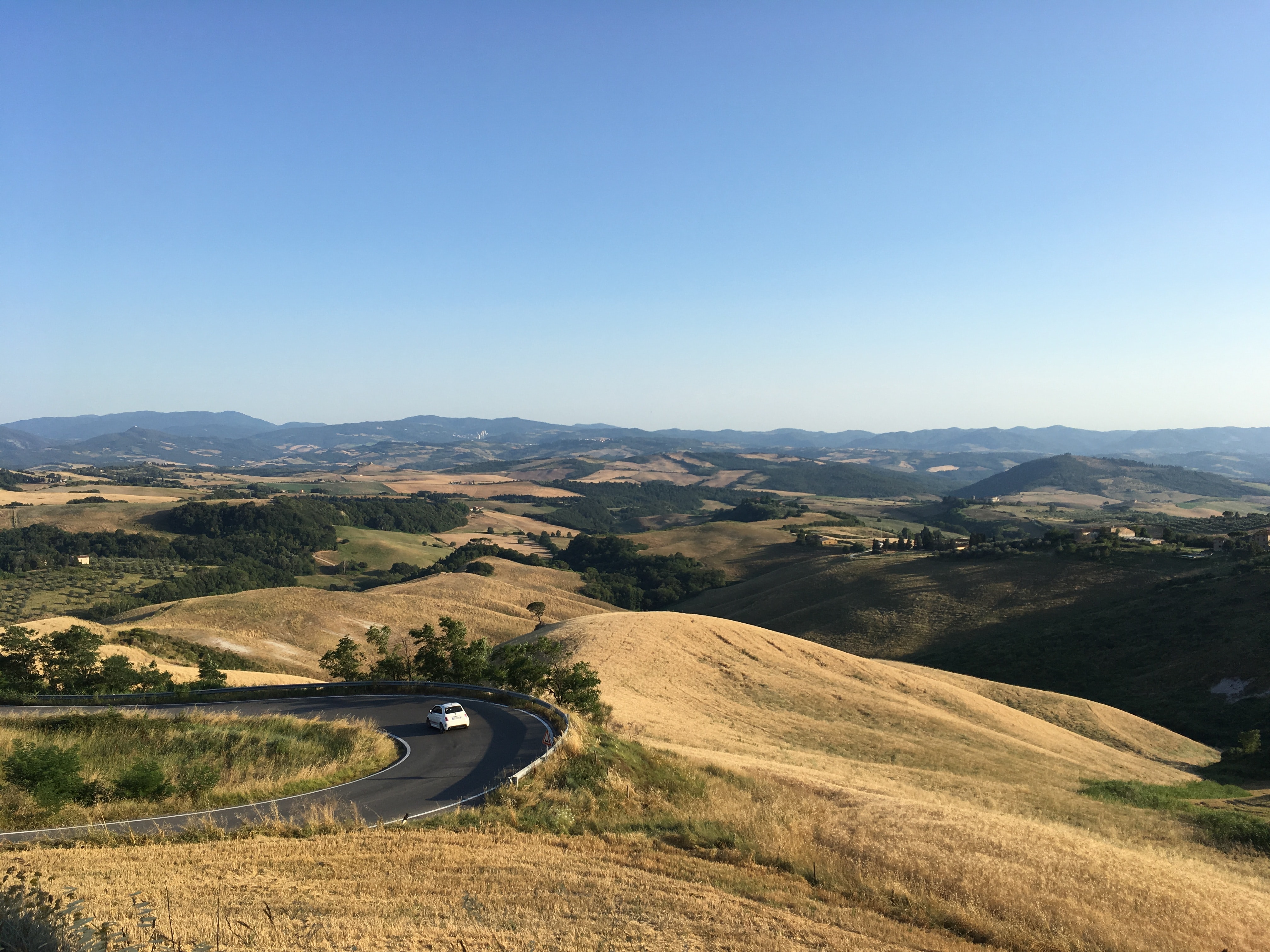Volterra: A Beautiful Tuscan Hilltop Village Steeped in History and Culture

Volterra is one of the most beautifully preserved towns and a highlight of our visit to Tuscany. It is a charming hilltop village set at 531 m (1,742 ft) in Tuscany that is steeped in history and culture. The city has a fascinating past, having been one of the main city-states of ancient Etruria and later a significant episcopal lordship during the Middle Ages. Visitors can still enjoy the medieval atmosphere of this historic village, with its double walls, Etruscan and thirteenth-century, and picturesque streets that wind their way up the hill.
Walking through Volterra, visitors can see remnants of its history. In medieval times, four times as many people lived within the city walls, leading to the construction of wooden additions and balconies hanging over the streets. These little nubs supported these wooden additions and allowed for the town's expansion.
Volterra played an important role in both ancient Etruscan and Roman times. Under the Etruscans, it was a city of 25,000 inhabitants, and under the Romans, it was just as populous. The town even boasts a Roman theater that once seated up to 2,000 spectators. In fact, there are Roman ruins buried throughout the town, waiting to be uncovered.
Recently Volterra has become a popular destination for tourists in recent years, thanks to its inclusion in Stephenie Meyer's Twilight series as the home of the Volturi. However, visitors should not expect to find any specific locations associated with the books, nor are they likely to encounter any vampires. In fact, the scenes set in "Volterra" in the film adaptation of New Moon were actually filmed in Montepulciano.
Things to See and Do in Volterra
The historical and religious heart of the city is Piazza San Giovanni, home to the Cathedral of Santa Maria Assunta and the Baptistery of San Giovanni, both excellent examples of local medieval architecture. The Palazzo dei Priori, the oldest municipal building in Tuscany, also stands in the square. The beauty of Volterra extends beyond the historic center, where visitors can explore the splendid Roman theater and the ruins of the Etruscan Acropolis.
One of the most famous products of Volterra is alabaster, and the city has been known for centuries for its skilled artisans who create beautiful artifacts from this material. Visitors can explore the museums dedicated to the city's artistic heritage, including the Etruscan Museum, Pinacoteca, Museum of Sacred Art, and Eco-Museum of Alabaster.
Want to explore more? Take a look at our Top Things To See in Volterra
Near Volterra
Venturing out of the city, there are several nearby attractions to discover. The Badia di San Giusto, a Camaldolese monastery founded in 1034, boasts a well-preserved cloister and refectory and a spectacular panoramic view. Visitors can also visit small villages like Montemiccioli, a small castle built on the border between the territory of Volterra and San Gimignano, and Saline di Volterra, where rock salt deposits have been exploited since the tenth century.
The Berignone Forest Nature Reserve is another nearby attraction, offering over two thousand hectares of woods and rich fauna. The Masso delle Fanciulle resort in the reserve is the perfect place to cool off on hot summer days.
Volterra hosts several events throughout the year, including the Marzuolo Truffle Market Exhibition in March, the Volterragusto in October, and the Palio dei Caci, a fun cheese-rolling challenge that takes place in the steep Via Franceschini. The city also hosts the medieval reenactment called Volterra AD on the second and third Sunday of August, featuring shows, events, markets, workshops, music, and jugglers.
Food in Volterra
Foodies will love the rustic and authentic cuisine based on local tradition that is prevalent in Volterra and the surrounding areas. The Pecorino delle Balze Volterrane DOP is a cheese made exclusively from raw milk with vegetable rennet, and is a must-try for visitors. One must-try dish is zuppa volterrana, a thick soup made with vegetables and bread. Another favorite is trippa alla volterrana, which features tripe cooked with tomato, sausage, and herbs. For pasta lovers, the options are endless. Look for dishes made with organic local flour, such as pappardelle di lepre, a pasta ribbon dish served with hare sauce, or with wild boar, known as cinghiale. Pasta dishes are also available with ceps (porcini) or with white Marzuolo truffles.
Volterra's Etruscan heritage is apparent in its food, with one unusual dish being the morbid-sounding almond biscuits called ossi di morto, which translates to "bones of the dead." Despite the name, these sweet treats are a must-try for visitors interested in the city's ancient history and culture. Don't be afraid to sample the local specialties, as they offer a unique and delicious taste of Volterra's rich culinary traditions.
Volterra offers a glimpse into Tuscany's rich history and culture, with its oldest city hall serving as a symbol of the town's strength and independence. Visitors can immerse themselves in the town's traditions and explore its hidden corners. Whether strolling along its main street or discovering its ancient ruins, Volterra is a town that offers a unique experience for travelers.
Want to explore Tuscany a bit more? Take a more indepth look at the links below
FLORENCE
All about Florence, Pisa and Lucca
The Top 10 Must Sees in Florence
The Florentine Sandwich Shop that Everyone Is Talking About
LUCCA
14 Delicious Things to Eat in Lucca
PISA
10 Delicious Things to Eat in Pisa
VOLTERRA